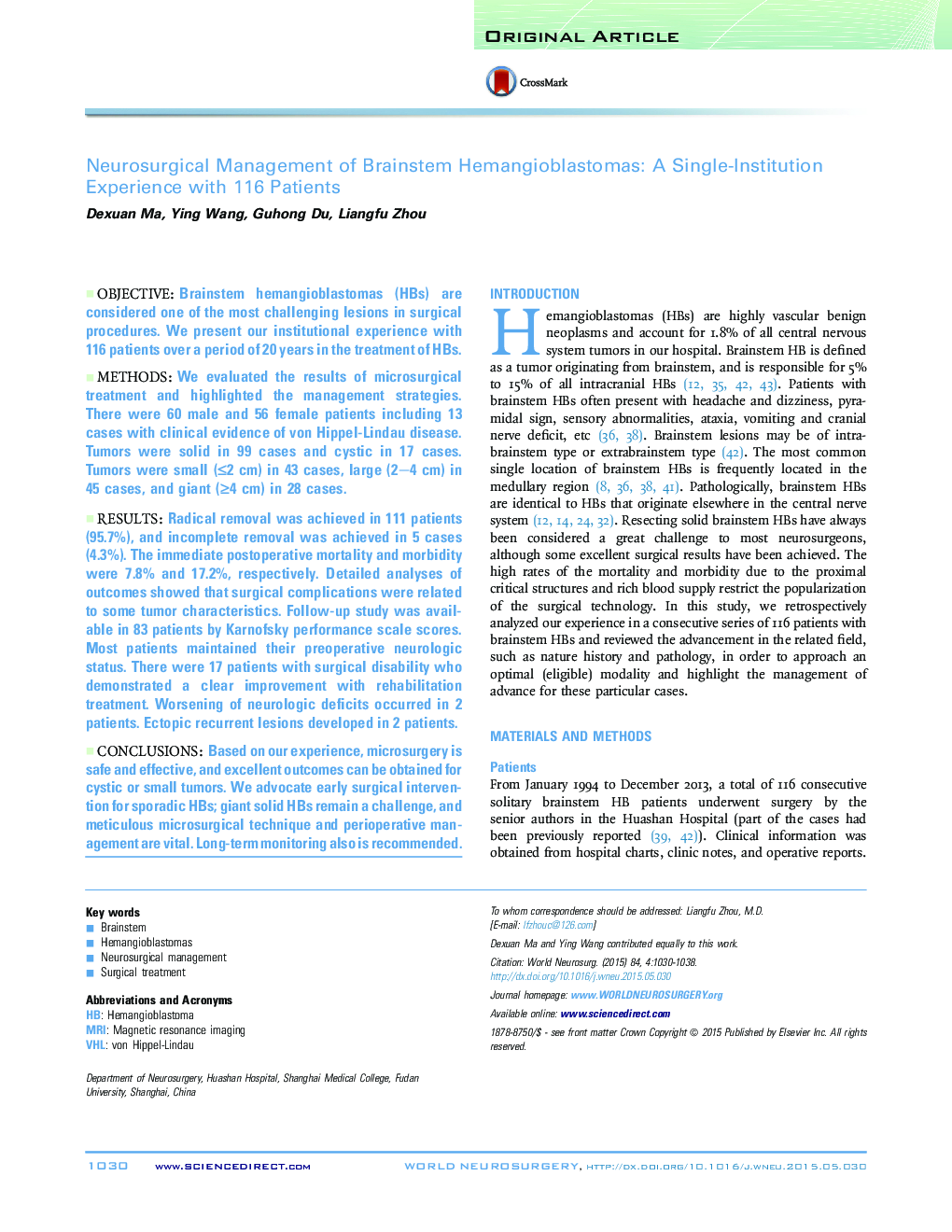| Article ID | Journal | Published Year | Pages | File Type |
|---|---|---|---|---|
| 6044894 | World Neurosurgery | 2015 | 9 Pages |
ObjectiveBrainstem hemangioblastomas (HBs) are considered one of the most challenging lesions in surgical procedures. We present our institutional experience with 116 patients over a period of 20 years in the treatment of HBs.MethodsWe evaluated the results of microsurgical treatment and highlighted the management strategies. There were 60 male and 56 female patients including 13 cases with clinical evidence of von Hippel-Lindau disease. Tumors were solid in 99 cases and cystic in 17 cases. Tumors were small (â¤2 cm) in 43 cases, large (2-4 cm) in 45 cases, and giant (â¥4 cm) in 28 cases.ResultsRadical removal was achieved in 111 patients (95.7%), and incomplete removal was achieved in 5 cases (4.3%). The immediate postoperative mortality and morbidity were 7.8% and 17.2%, respectively. Detailed analyses of outcomes showed that surgical complications were related to some tumor characteristics. Follow-up study was available in 83 patients by Karnofsky performance scale scores. Most patients maintained their preoperative neurologic status. There were 17 patients with surgical disability who demonstrated a clear improvement with rehabilitation treatment. Worsening of neurologic deficits occurred in 2 patients. Ectopic recurrent lesions developed in 2 patients.ConclusionsBased on our experience, microsurgery is safe and effective, and excellent outcomes can be obtained for cystic or small tumors. We advocate early surgical intervention for sporadic HBs; giant solid HBs remain a challenge, and meticulous microsurgical technique and perioperative management are vital. Long-term monitoring also is recommended.
